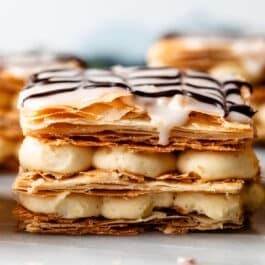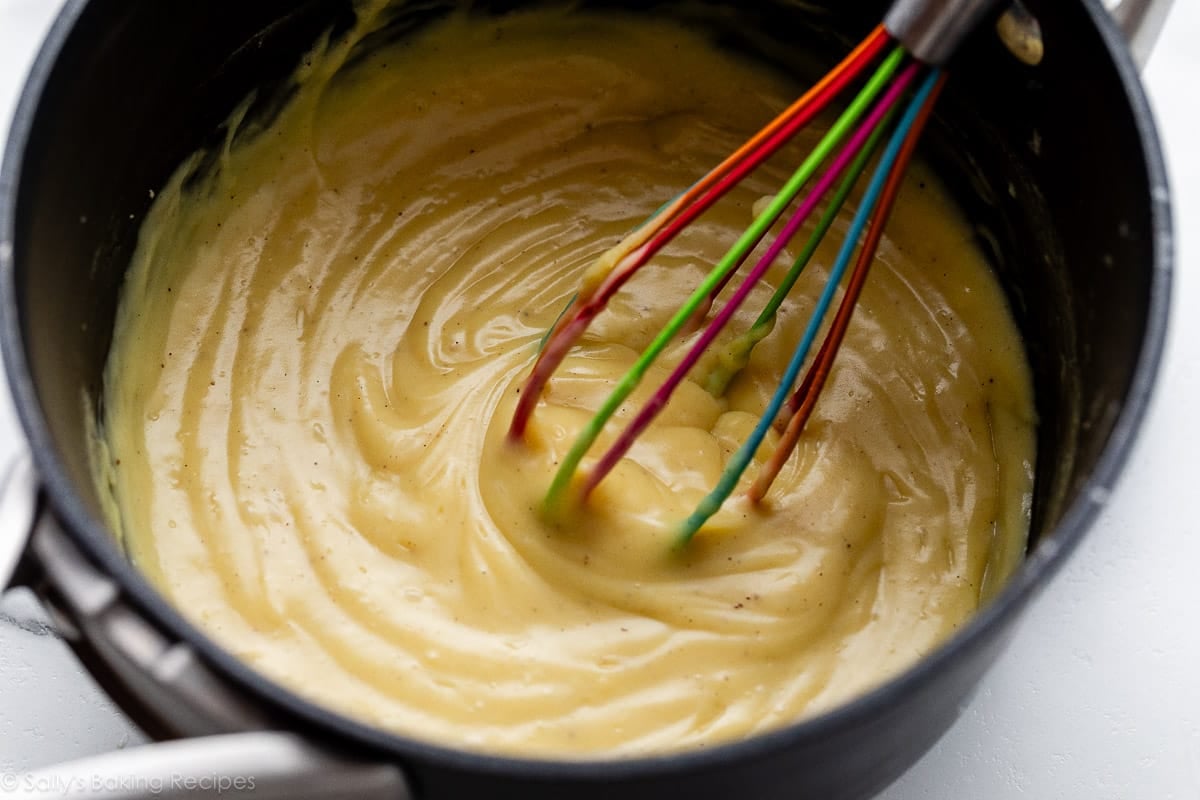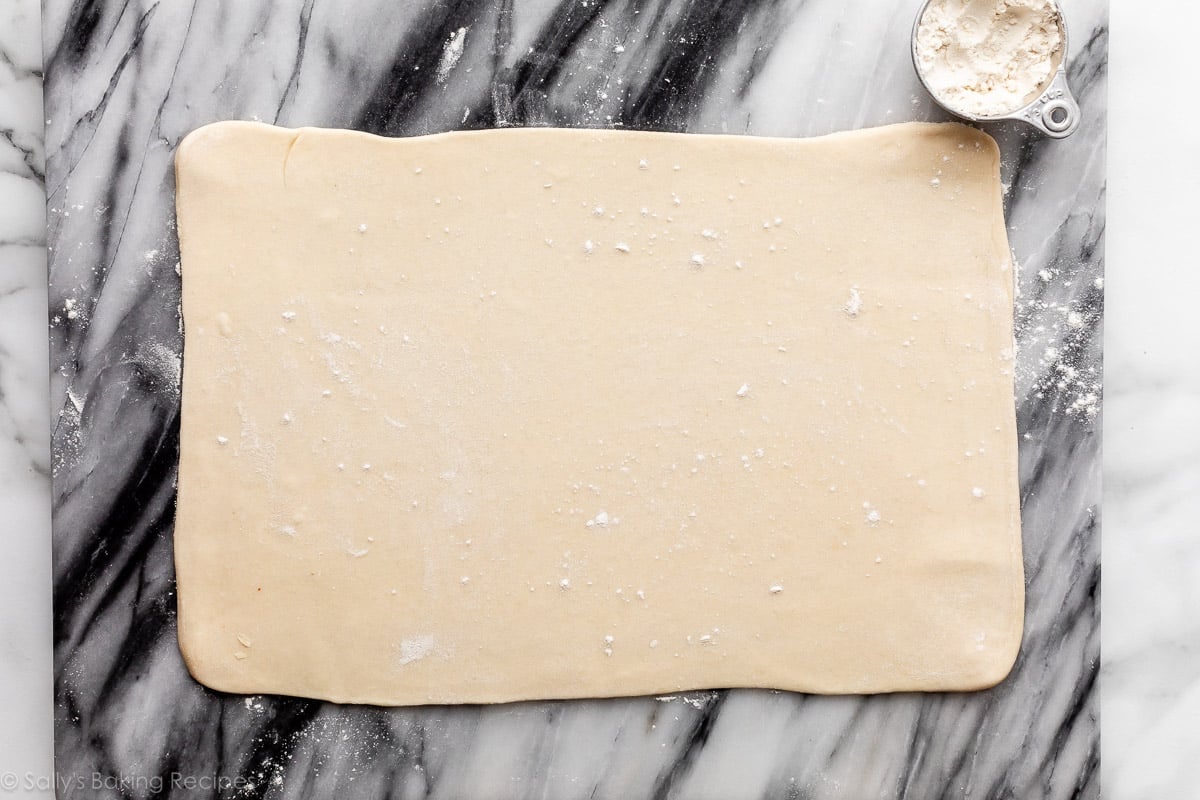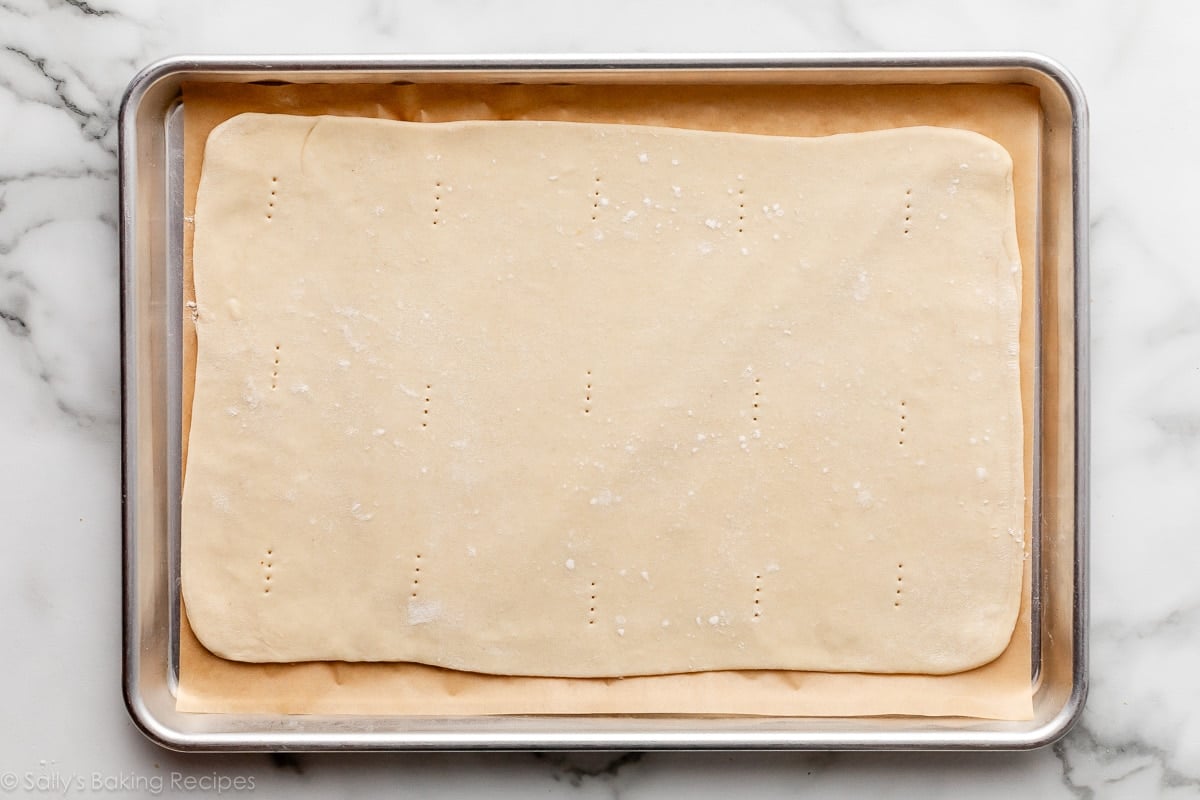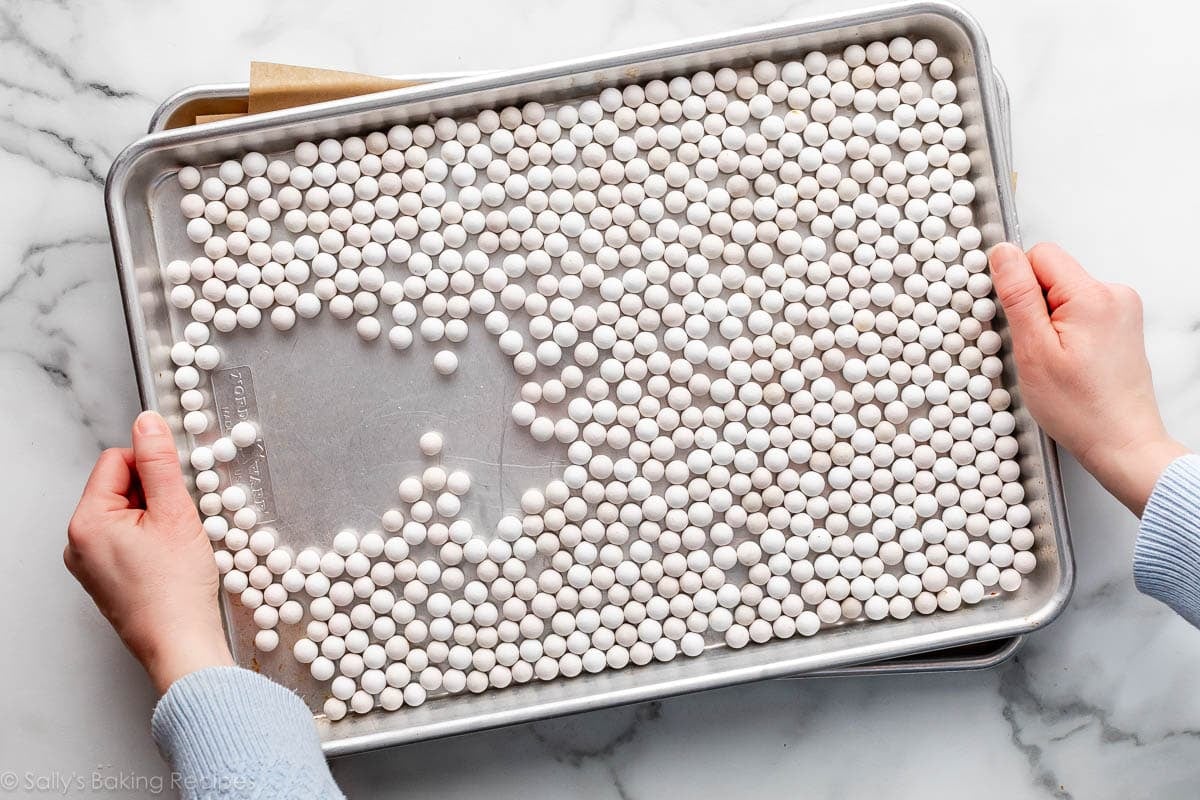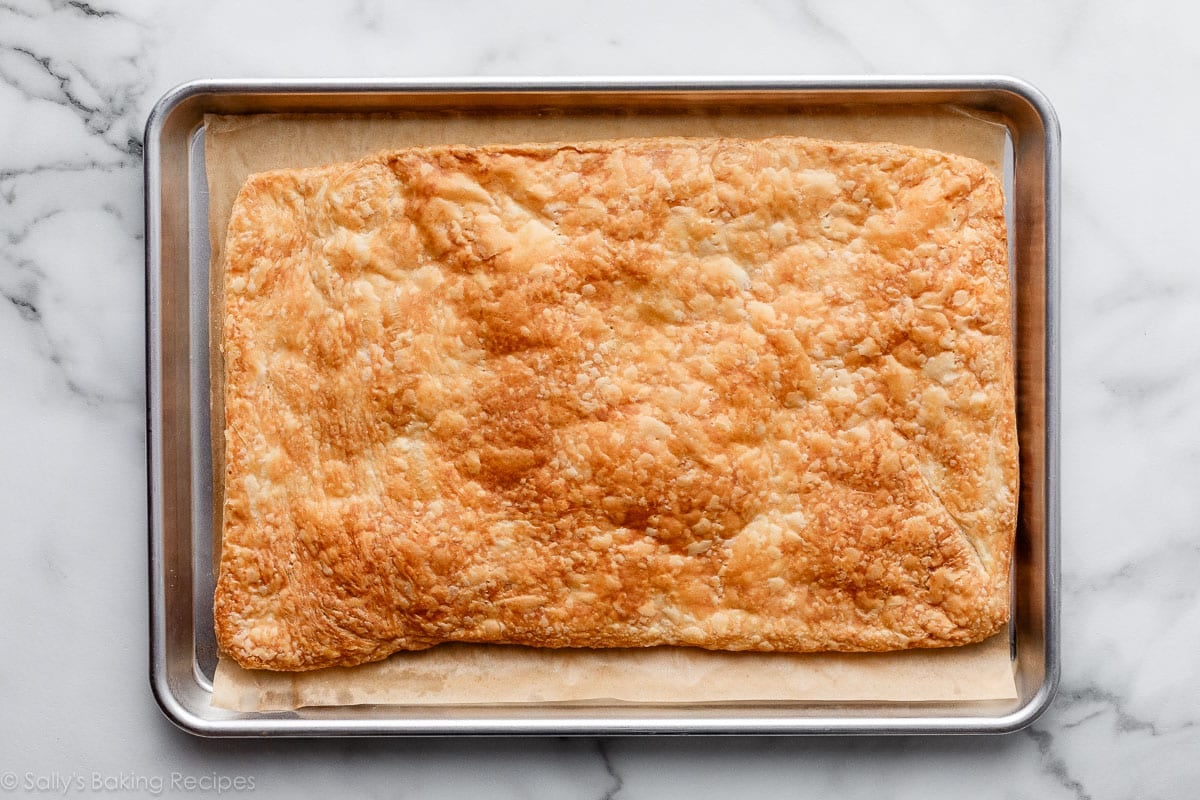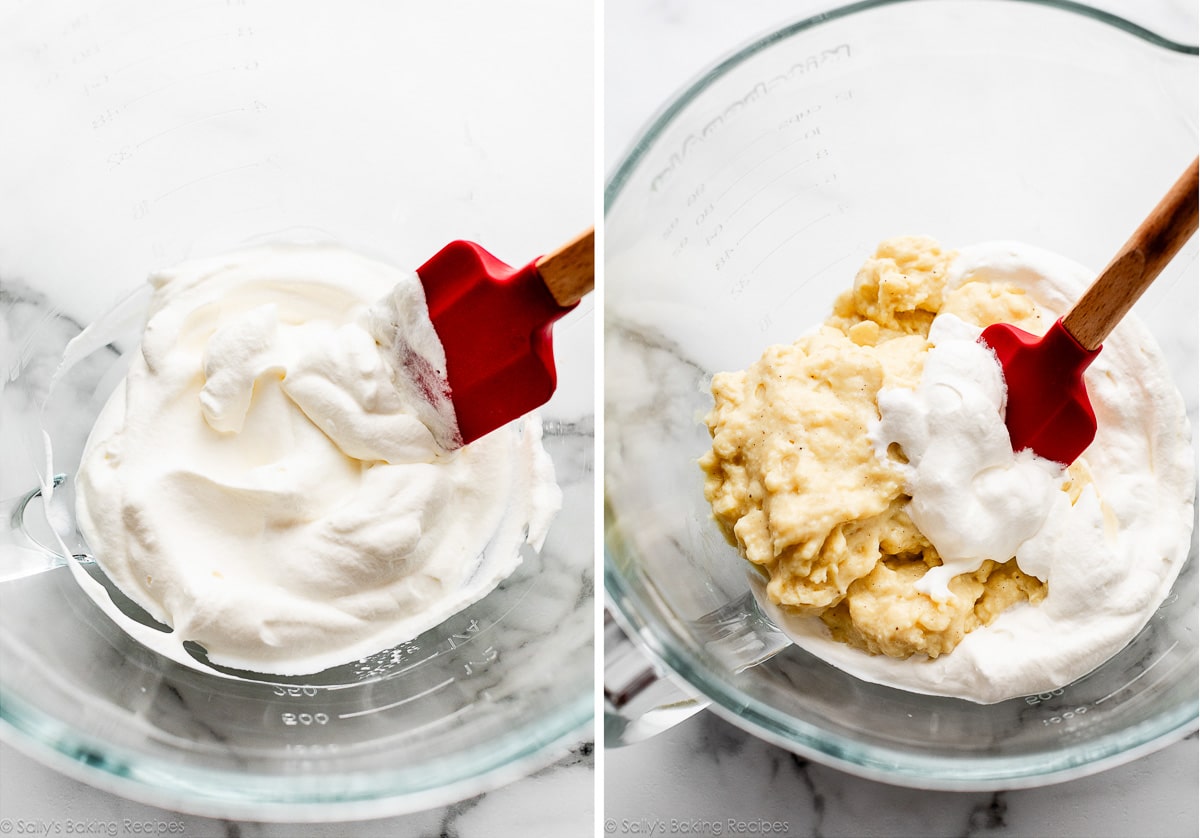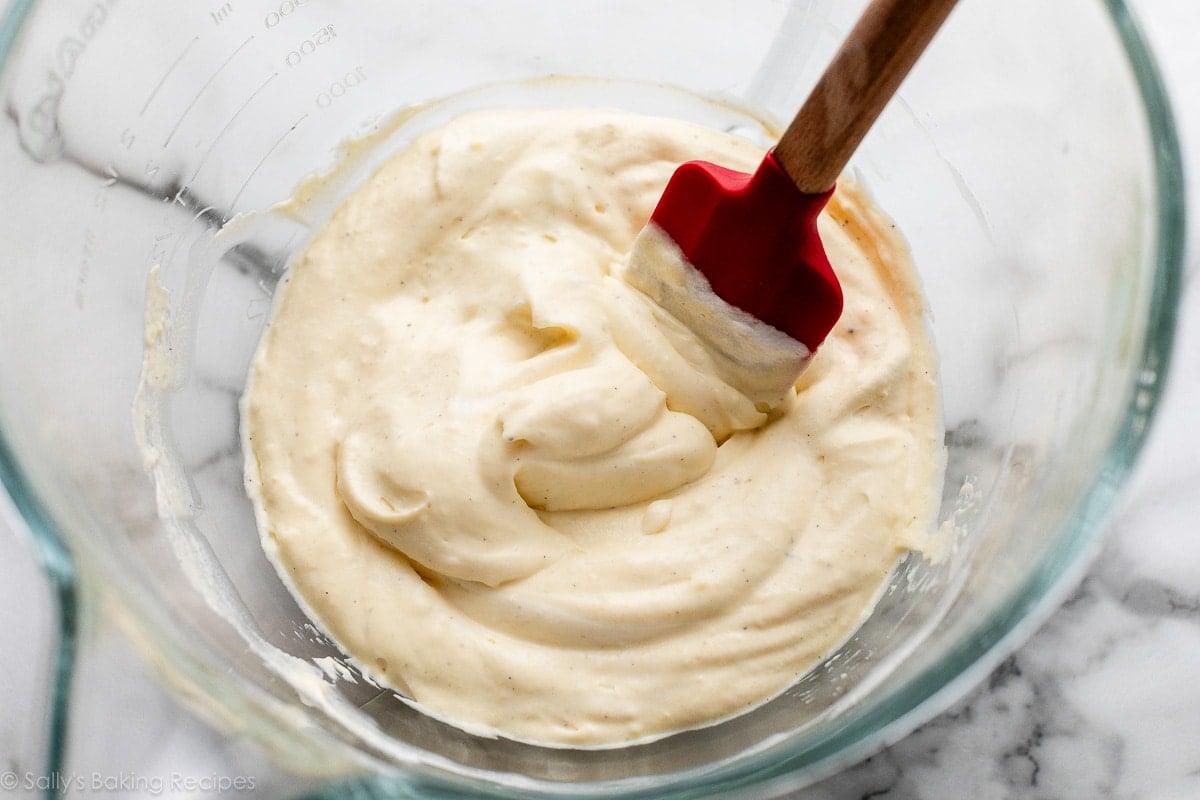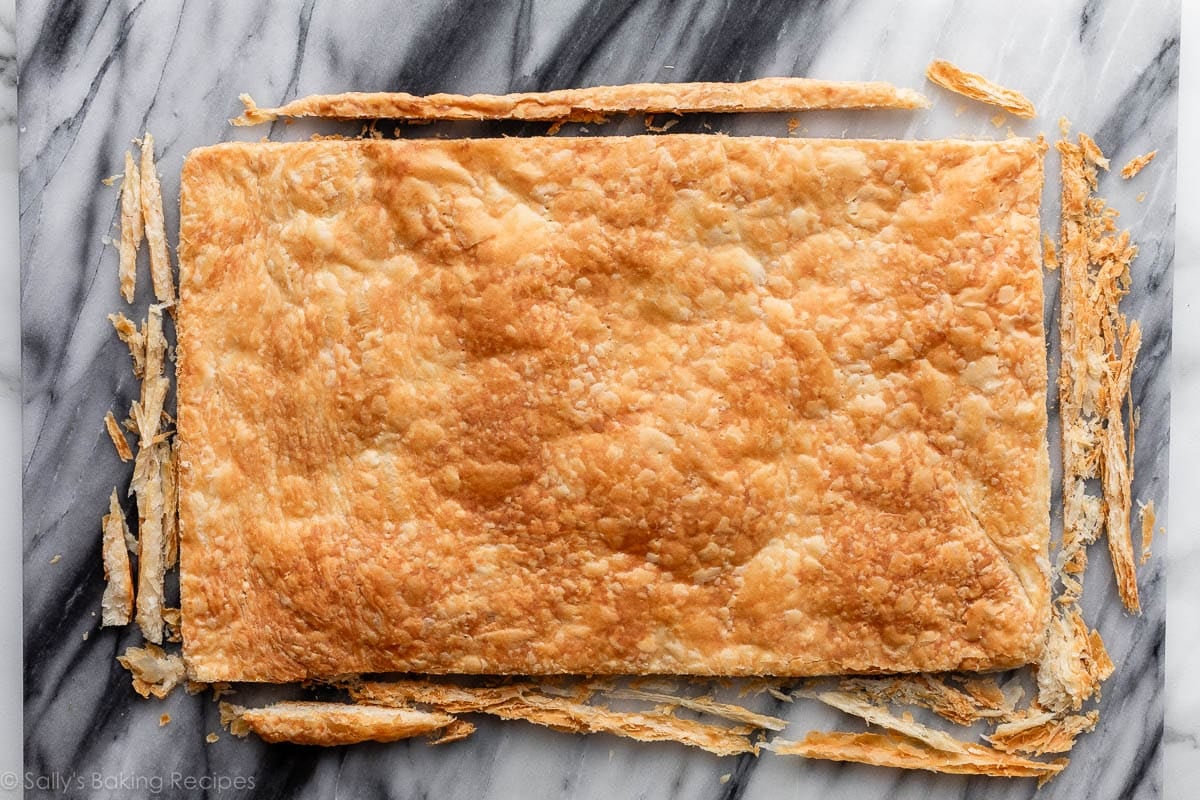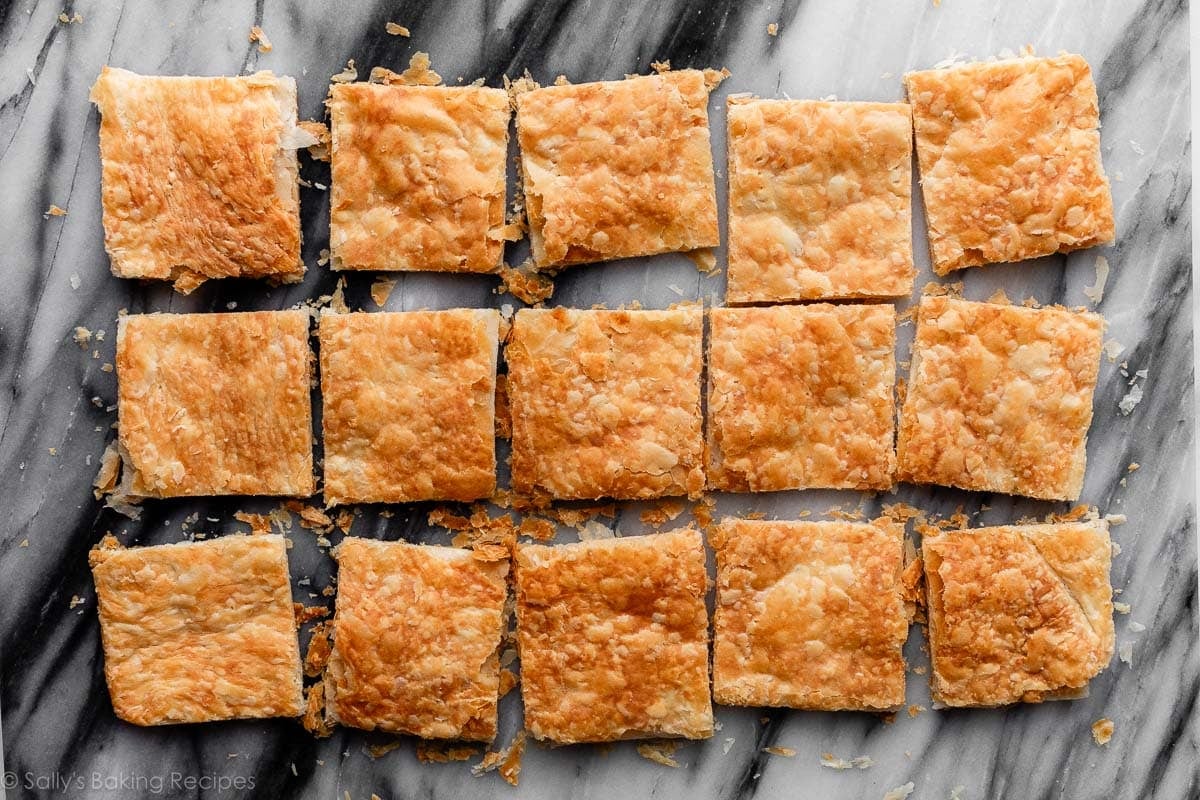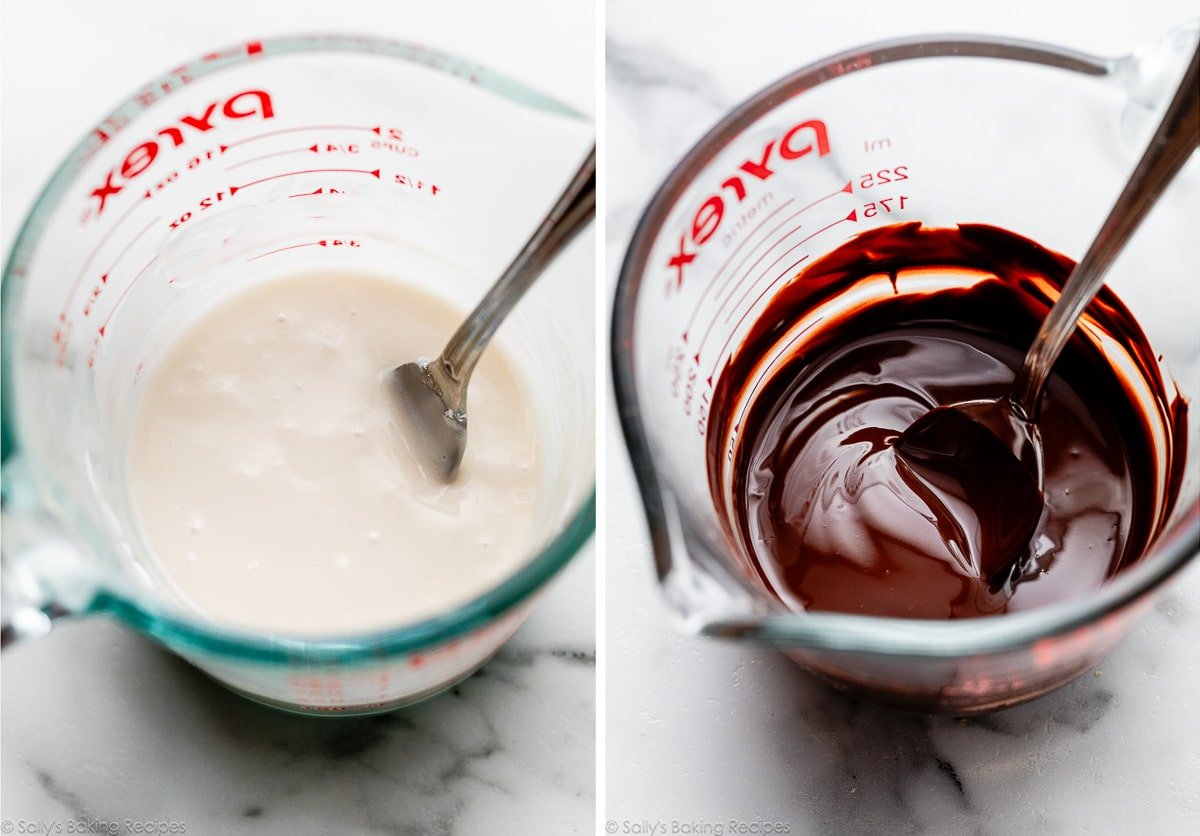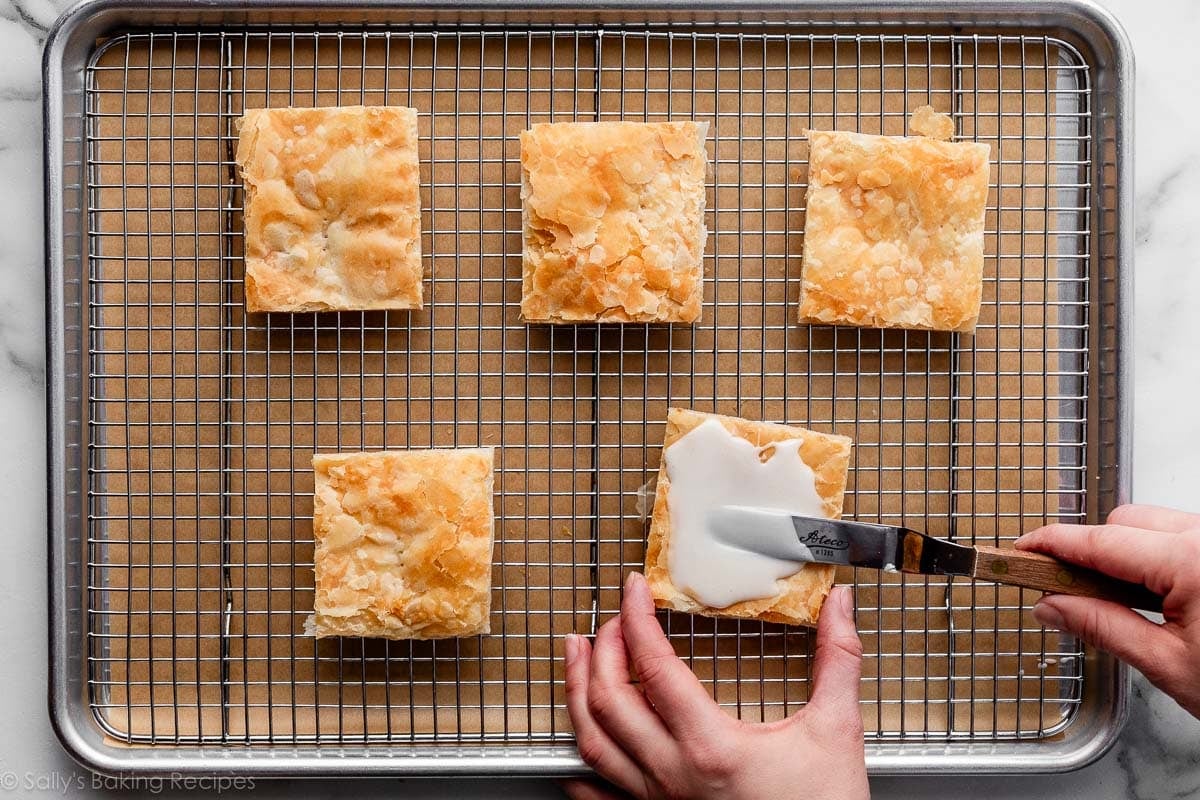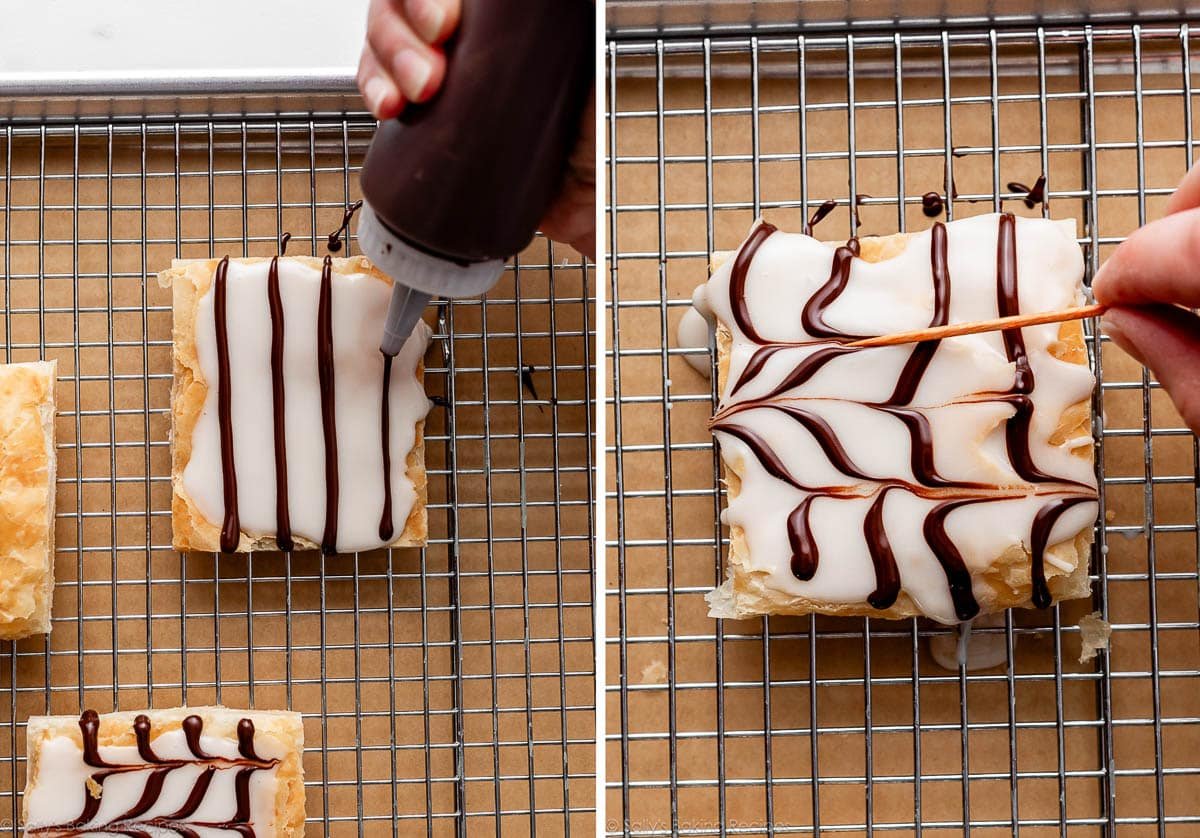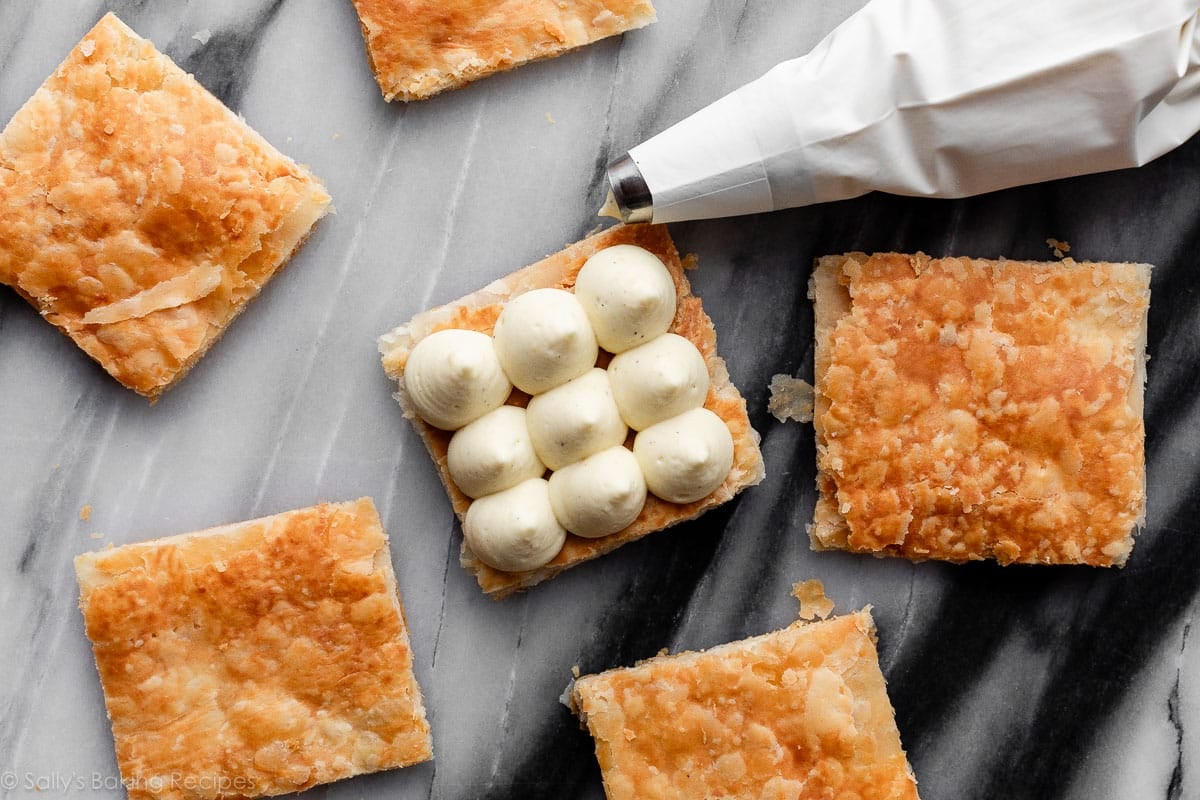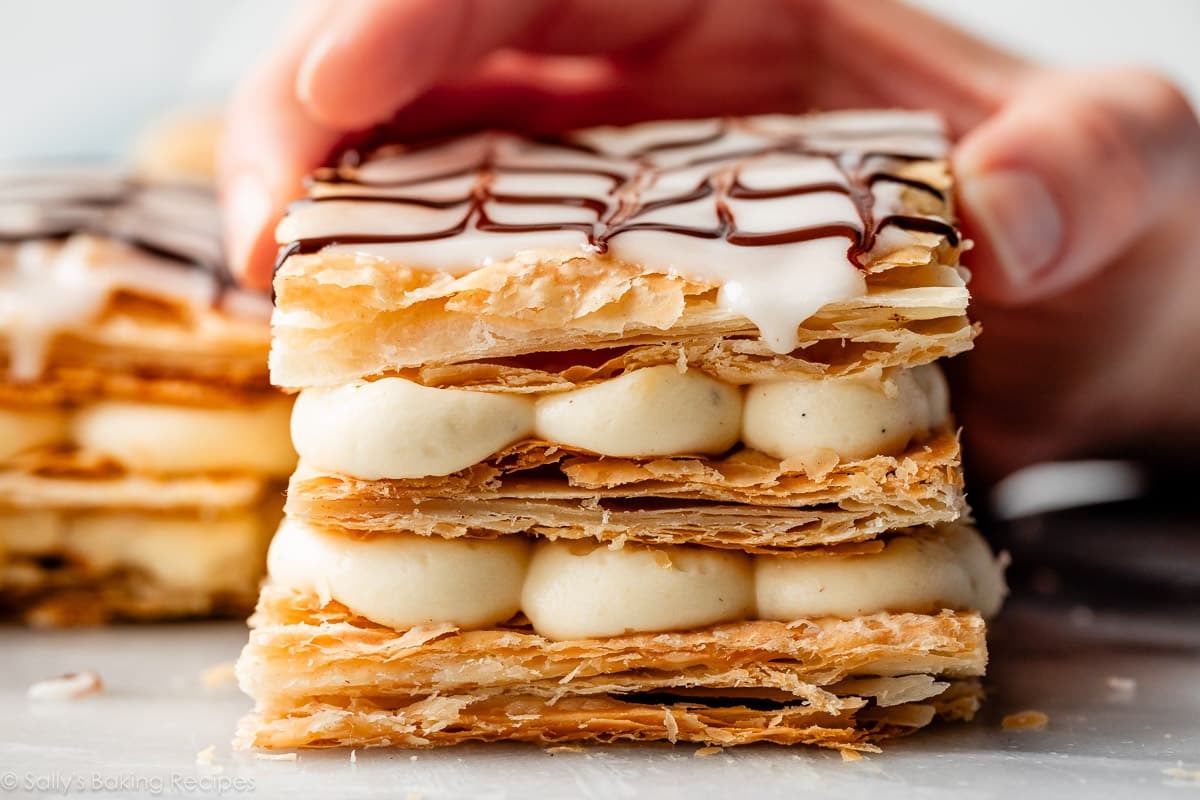Description
From the countless flaky layers of delicate puff pastry, to the creamy clouds of vanilla pastry cream, to the decorative marbled icing, mille-feuille is an indulgent dessert worthy of a special occasion. Learn how to make this classic European pastry in your own kitchen by carefully following the detailed recipe below. I also include thorough explanations in the blog post above, and step photos in the recipe instructions, to set you up for success. Review recipe Notes below before starting.
Ingredients
Dough
- 1 lb. homemade rough puff pastry or store-bought frozen & thawed puff pastry (2 sheets)
- all-purpose flour as needed to roll dough
Pastry Cream Filling
- 4 large egg yolks, cold or room temperature
- 3 Tablespoons (23g) cornstarch
- 2 cups (480ml) whole milk (do not use low-fat or nondairy)
- 1/2 cup (100g) granulated sugar
- 1 Tablespoon (14g) unsalted butter, softened to room temperature
- 1 teaspoon pure vanilla extract
- seeds scraped from 1/2 vanilla bean (or extra 1/2 teaspoon vanilla extract)
- small pinch salt
- 1/2 cup (120ml) heavy cream or heavy whipping cream, cold
Topping
- 1 cup (120g) confectioners’ sugar, sifted
- 1.5 Tablespoons milk (dairy or nondairy)
- 1/2 teaspoon pure vanilla extract
- 2 ounces (57g) semi-sweet chocolate, coarsely chopped
Instructions
I encourage you to read through this recipe entirely before beginning, so you understand each step and are prepared for the various cooking, cooling, and chilling stages.
- Prepare homemade rough puff pastry dough through 2nd refrigeration. If using store-bought frozen puff pastry, thaw according to package directions. Keep either dough in the refrigerator until step 7 below.
- Make the pastry cream: In a large heatproof bowl (preferably with a pour spout), whisk the egg yolks and cornstarch together with a fork. It may not look like it will all come together (it will be dry at first), but keep mixing until the mixture is thick and combined. If it’s not coming together at all, add a few drops of the milk you need in step 3 to bring together. Set aside at room temperature.
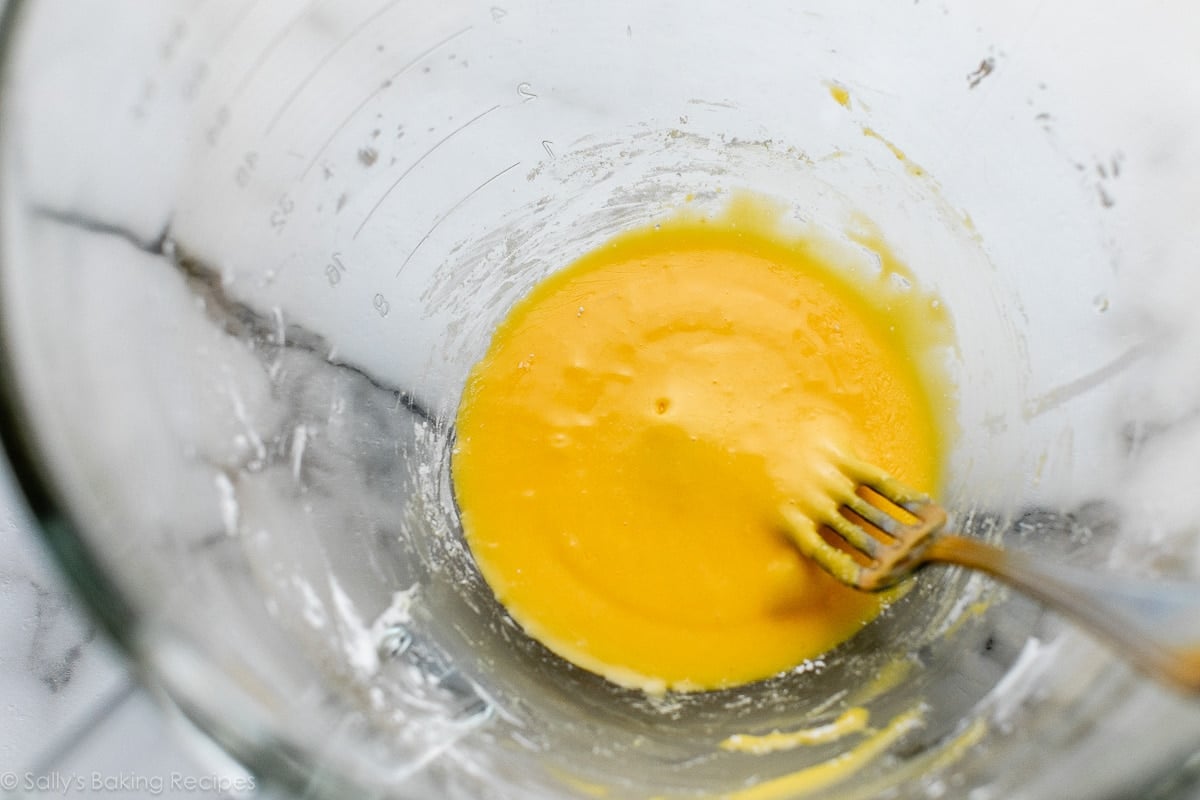
- Combine the milk and sugar in a medium saucepan over medium heat. Whisk until the sugar has dissolved, then bring to a gentle simmer. Remove from heat. Pour the warm milk and sugar mixture in a slow and steady stream into the egg yolk and cornstarch mixture, whisking the entire time. Keep those egg yolks moving so they don’t scramble. Over a sieve, to strain out any egg yolk solids that may have formed during tempering, pour the mixture back into the saucepan.
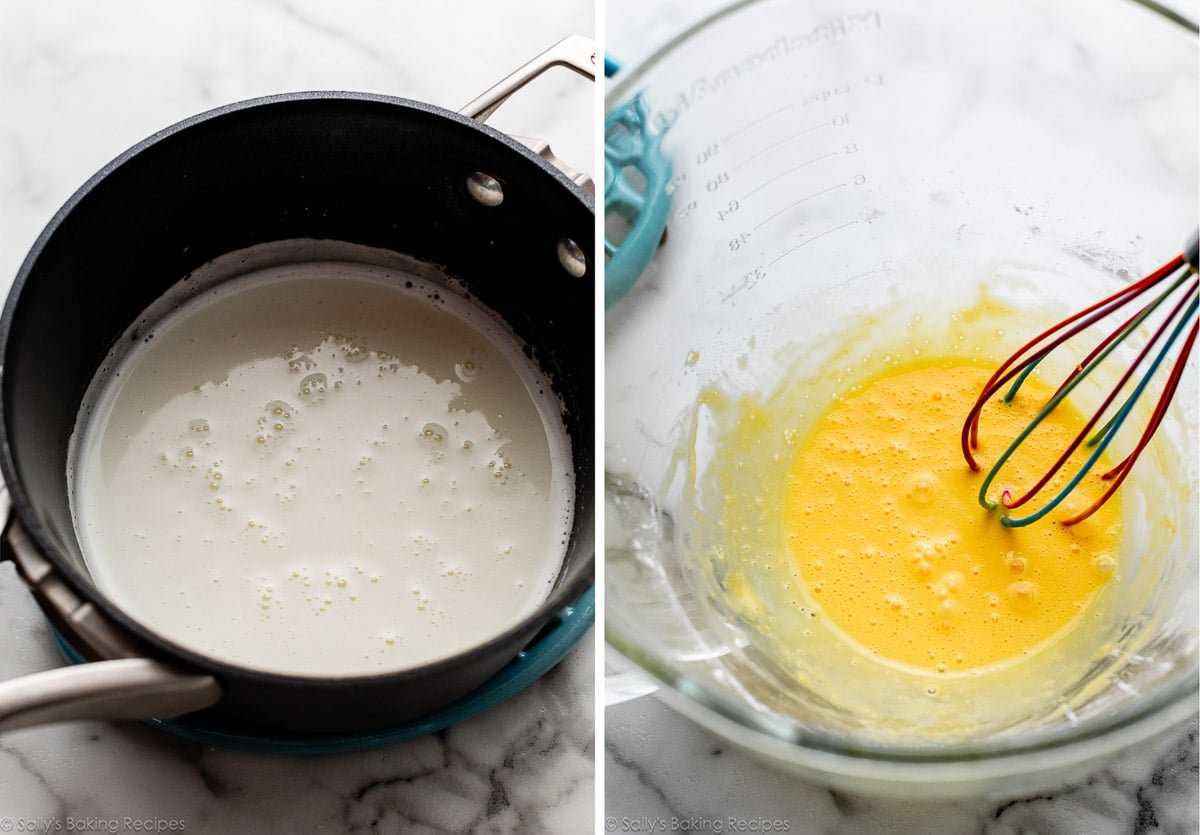
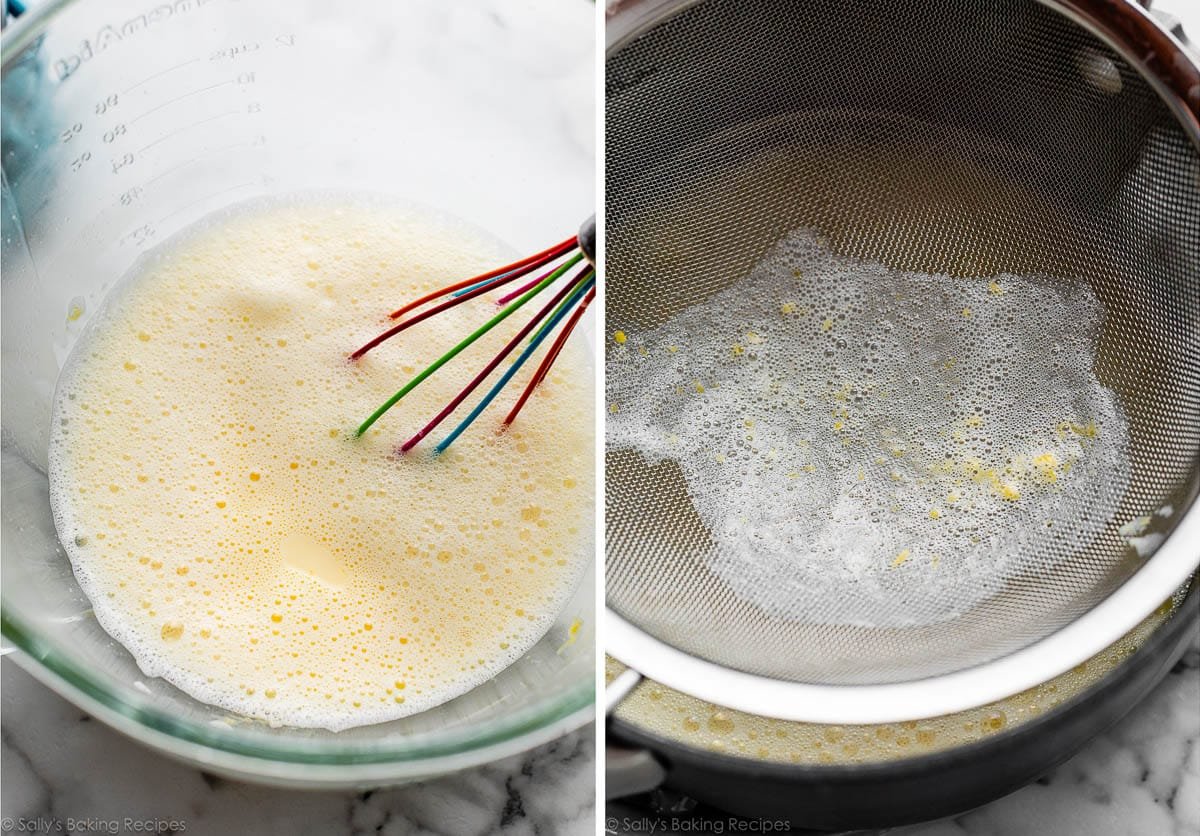
- Return the saucepan to medium heat, and whisk constantly. The mixture will be frothy on the surface at first, and then it will begin to thicken quickly and large bubbles will begin to burst on the surface. This usually takes about 1–2 minutes. Stand back and use caution. Let the bubbles burst for about 20 seconds, or until the mixture has thickened into a custard- or pudding-like consistency. (For a more accurate test, the custard is done when the temperature reaches 185–190°F (85–88°C).) Remove from heat. Whisk in butter, vanilla extract, vanilla bean seeds, and a pinch of salt. Cool for 10 minutes. (You will use the heavy cream later, in step 9.)
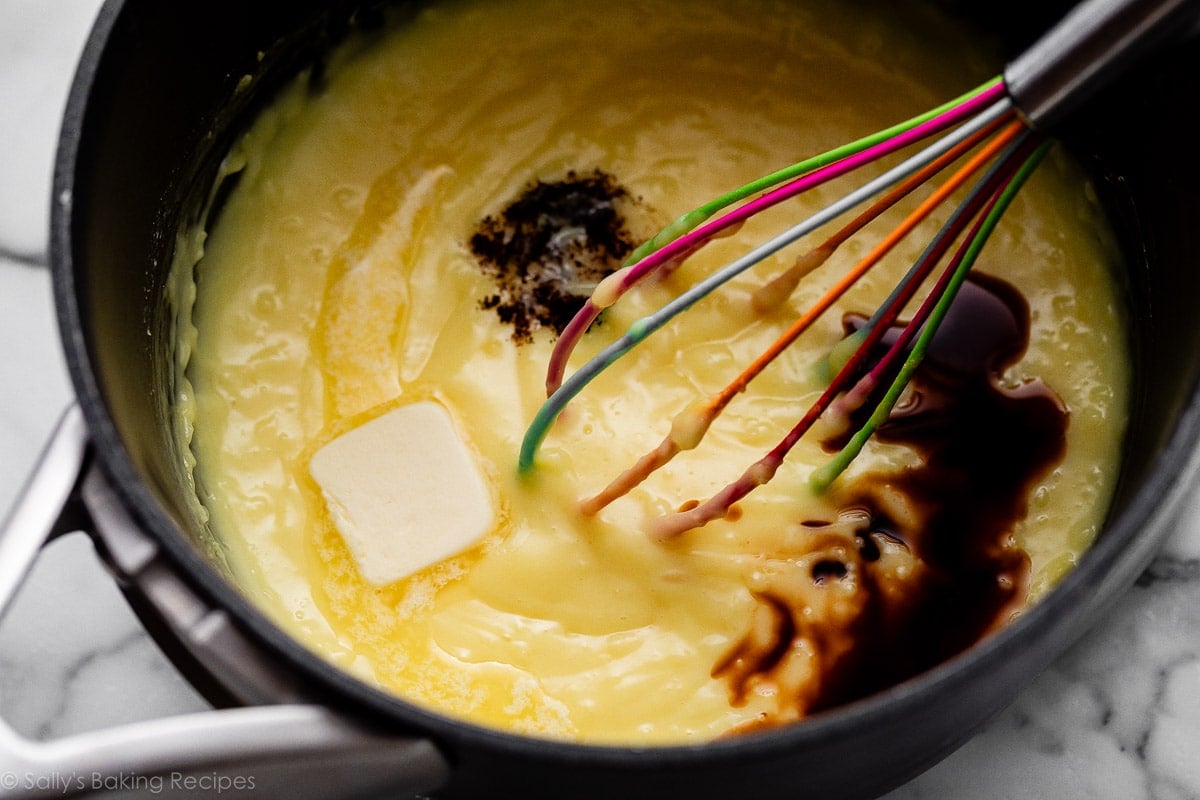

- Transfer the pastry cream from the saucepan to a heatproof bowl and place a piece of plastic wrap or parchment directly on the surface of the custard, to prevent a skin from forming. Refrigerate for at least 3 hours, and up to 24 hours. Makes 2–2.5 cups, or about 580–610g.
- Preheat oven to 400°F (204°C). Line a 12×17-inch baking sheet (half sheet pan) with parchment paper. Have a second baking sheet and more parchment paper out as well. Set aside.
- Shape the dough: On a floured work surface using a floured rolling pin, roll pastry dough into a rectangle about 11×16 inches in size. (If using store-bought puff pastry sheets, place them side by side, with the edge of one sheet overlapping the other in the center, and use a rolling pin to adhere them together as you roll the whole thing out into an 11×16-inch rectangle.)

- Transfer the dough to the lined baking sheet. Dock the surface with a fork to allow steam to escape. Place a second piece of parchment paper on top of the pastry dough. Set a second baking sheet, filled with pie weights (or dried beans, or other options see recipe Note below) on top. Bake for 20 minutes with pan & weights on top. Remove from oven and carefully remove the top weighted baking sheet and the top piece of parchment. Return the uncovered pastry to the oven for 7–9 more minutes, or until golden brown. Remove from the oven and cool for 20 minutes on the pan, and then carefully lift it and place on a cooling rack to cool completely.



- Finish the cream filling: Using a handheld or stand mixer fitted with a whisk attachment, whip the cold heavy cream on medium-high speed until medium peaks form, about 3 minutes. Add the chilled pastry cream to the bowl with the whipped cream. Beat on low speed until just combined and smooth. Do not over-mix. Cover and refrigerate for at least 1 hour and up to 4 hours. You’ll use it in step 12.


- Assemble the pastries: Using a large, very sharp knife, trim around the sides of the cooled pastry to straighten up any uneven edges. Use the knife to cut the pastry into 15 squares roughly uniform in size. NOTE: The pastry will shrink some while baking. After starting with dough rolled out to 11×16 inches, after baking it typically ends up around 9–10×14–15 inches. So if you have a baked pastry that’s 9×15 inches (after trimming the edges), your 15 squares will be 3×3 inches. If your pastry is a slightly different size, don’t panic! Use a measuring tape or ruler to measure the sides to determine exactly how wide to space your cuts. Measure the long side and divide by 5, then measure the short side and divide by 3.


- Make & add the topping: In a small bowl, whisk together the sifted confectioners’ sugar, milk, and vanilla until combined and smooth. Place the chopped chocolate in a small microwave-safe bowl or liquid measuring cup. Melt in 20-second increments in the microwave, stirring after each increment, until completely melted and smooth. Transfer the melted chocolate to a squeeze bottle or a piping bag fitted with a small round tip, or use a small plastic sandwich bag and cut off a bottom corner. Place 5 pastry squares on a wire rack set over parchment paper. With a spoon or icing spatula, spoon and spread the vanilla icing on one square. Before the icing has a chance to set, pipe 4 lines of melted chocolate across each top. Use a toothpick to create a chevron design, dragging it across the stripes in a perpendicular direction. Alternate directions with the toothpick, wiping the toothpick end with a paper towel in between each pass. Repeat with the remaining 4 pastry squares.



- Assemble the mille-feuille: Fit a pastry/piping bag with a large round tip. Or, you can simply use a large plastic bag and snip off a bottom corner with scissors. Starting with one of the (plain/un-iced) pastry squares, pipe 3 dollops of cream filling in 3 rows (9 dollops total). Place another (plain) pastry square on top, pressing down very lightly. Repeat the piping of 9 dollops on the next layer. Place one of the decorated (iced) pastry squares on top of the second layer of cream filling. Repeat with the remaining pastry squares; you will have 5 assembled pastries. Refrigerate uncovered for at least 30 minutes before serving, or up to 8 hours. The soft filling will spill out the sides when you cut or bite into it, and that’s expected.


- Store mille-feuille in an airtight container in the refrigerator for up to 3 days. The pastry will become softer and less crisp over time.
Notes
- Make-Ahead & Freezing Instructions: There are several ways to get started on this recipe. If using homemade dough, you can prepare it 1-2 days in advance. See rough puff pastry dough recipe for details. You can prepare the pastry cream 1 day ahead of time, see step 5. The baked and cooled puff pastry, either as a whole or cut into squares, is fine covered at room temperature for up to 1 day. To freeze, after the assembled pastries have been refrigerated for at least 30 minutes in step 12 (or until the icing sets), you can wrap them each in plastic wrap and freeze for up to 3 months. Thaw in the refrigerator. You will lose some of that crisp, flaky texture in the puff pastry though.
- Special Tools (affiliate links): Whisk | Sieve | Instant-Read Thermometer | Electric Mixer (Handheld or Stand) | Rolling Pin | Parchment Paper | Baking Sheet | Pie Weights | Cooling Rack | Small Offset Icing Spatula | Piping Bag (Reusable or Disposable) | Ateco 808 Piping Tip or other large round tip | Squeeze Bottle or small icing tip such as Wilton Icing Tip #5
- Puff Pastry: If using homemade puff pastry, be generous with the bench flour when rolling out, to prevent sticking.
- Pie Weights: If you don’t have pie weights, you can use dried beans. OR you can just add the second baking sheet on top and not fill it with weights or beans. (Always add a piece of parchment paper on top of the dough, though, so the pan is not touching it.) OR as the baked pastry is cooling, place something heavy like a pot or pan on top of the top baking sheet, to weigh down the baking sheet that is on the puff pastry. (I have done that last suggestion before and it works just fine.)
- Chocolate: The best chocolate for melting and drizzling is the “baking chocolate” bars found in the baking aisle of the grocery store. I typically use Baker’s or Ghirardelli brands, either semi-sweet or bittersweet. They are usually sold as 4-ounce bars, so you’ll need half of one for this recipe. Do not use chocolate chips because they contain stabilizers, which prevent them from melting into the correct consistency.
- Other Filling Options: Instead of pastry cream, you can use the peanut butter mousse filling from these homemade eclairs; whipped cream for an extra light and barely sweetened filling; lightly sweetened whipped frosting; the no-bake cheesecake filling from these cheesecake jars; or the mousse filling from this dark chocolate mousse cake. Or you can still use pastry cream, or any of the suggestions I just listed, and layer your filling of choice with fresh raspberries or thinly sliced strawberries and dollops of jam. Or pipe rows of raspberry cake filling between rows of your choice of cream/mousse filling.
- Other Topping Options: Instead of the vanilla icing and melted chocolate combo, you can simply dust the tops with confectioners’ sugar. You can also skip the chocolate for a plain vanilla icing topping, or skip the vanilla icing and drizzle melted chocolate directly on top. Or some mille-feuille recipes use royal icing. If you want to use my recipe for royal icing, I recommend halving it.
- Adapted from a combination of Bake from Scratch & The Spruce Eats; I made changes to the cream filling, used homemade pastry (and found baking it as a whole sheet and then cutting into squares to be easiest), and opted for vanilla icing and melted chocolate instead of topping with royal icing or confectioners’ sugar.
Keywords: mille feuille, napoleon pastry
